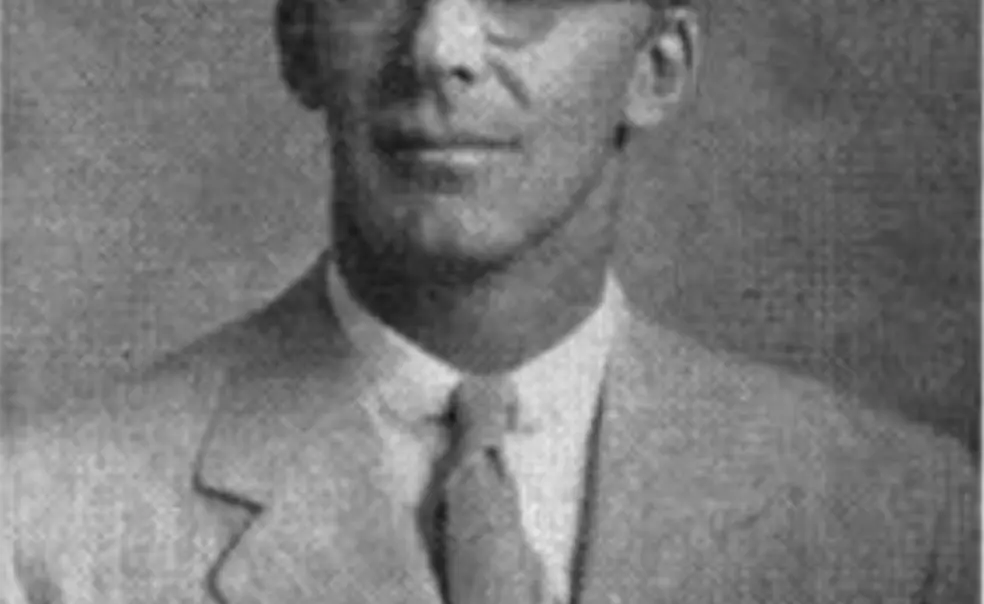Lyman Spitzer Jr. *37 *38 and the Atomic Energy Commission
It is with frustration and chagrin that we present the following heavily censored glimpse of what is probably the biggest news story of the 20th century at Princeton University. The Atomic Energy Commission has lifted the curtain in front of some extremely important research in the peacetime use of thermonuclear energy at the Forrestal Research Center, and just as quickly dropped it again. As John K. Wallace Jr. ’28, assistant director at Forrestal, said when queried by local newsmen, “because of security regulations we can’t say much more than that [there is no danger to local residents] or more than what has already been said.”
Public knowledge of these experiments began in August at the Geneva Atoms-for-Peace Conference, when the presidential address of Dr. Homi J. Bhabha, head of the Indian Atomic Energy Commission, proved to be one of the major surprises of the conference. He made the sensational prediction that “a method will be found for liberating fusion energy within the next two decades” and that when this is accomplished “the energy problems of the world will truly have been solved forever, for the fuel will be as plentiful as the heavy hydrogen of the oceans.”
Although this was a total surprise to the working press, no one contradicted him. There were no technical discussions on the subject, the rest of the conference being devoted to fission – not fusion – reactors.
Then this month Lewis L. Strauss, chairman of the Atomic Energy Commission, announced that large-scale research was being carried on in this country into an entirely new source of power of controlled thermonuclear reaction; that these experiments were initiated when a Princeton professor approached the Atomic Energy Commission in 1951 with an idea for containing and controlling this form of combustion; and that one of the principal centers for this research is at the Forrestal Research Center, where the local division of Project Sherwood – the nationwide designation for this program – goes forward under the direction of Professor Lyman Spitzer Jr. Ph.D. ’38, who suggested the idea in the first place, and under the name Project Matterhorn.
Commissioner Strauss prefers not to use the name Project Sherwood but calls it “the idea.” It involves the fusion of hydrogen into helium under control so that thermonuclear energy might be applied to public power use; the apparent intention is that of rapidly repeating small hydrogen explosions, somewhat like those of an automobile engine. The importance of this plan for world history is obvious, since the known reserves of coal will be exhausted in a finite span of time. At the same time, the difficulties are formidable, and the usually prediction is that it will take 20 years to surmount them.
President Dodds made the following statement:
“At Princeton we are gratified that members of the faculty, and their associates, under the leadership of Professor Lyman Spitzer Jr., are contributing to the progress of this development. They are fulfilling with distinction the responsibility of their profession.
“It is heartening to find science emphasizing once again its traditional function of service to mankind. A successful result could well be a contribution of the greatest magnitude to human welfare.
“There are many grave problems ahead to be solved before any concrete results may be expected from this work. Some of these problems may never be solved, but we must press on with high hope and with faith in the ability of our scientists to succeed. The goal – a new source of power sufficient to supply mankind’s needs a thousand times over – demands our greatest efforts. The work at Princeton will be prosecuted with all our vigor.”
Collaborating with Professor Spitzer are Associate Professor Norman W. Mather, Research Associates Melvin Gottlieb and Edward Frieman, together with a growing number of other physicists and engineers. Great contributions were made in the early stages of the project by Professor Clodius H. Willis, Arthur LeGrand Doty Professor of Electrical Engineering at Princeton, and by Professor James A. Van Allen of the State University of Iowa during a year’s leave of absence which he spent at Princeton. The work is under the general supervision of a committee headed by Professor Henry D. Smyth ’18, formerly a member of the Atomic Energy Commission. There is one way in which curious Princeton alumni (or other qualified personnel) can find out all about thermonuclear energy, Project Matterhorn and all sorts of classified information. That is by answering the advertisement which appears on page 25.
This was originally published in the October 21, 1955 issue of PAW.












No responses yet